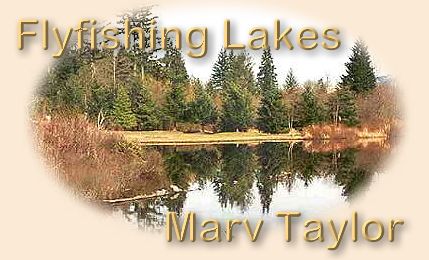|
The pattern in the photograph below is of the
original Sheep Creek as provided me in the spring
of 1970 by its originator, George Biggs. During
the past four or five years, I have changed the
pattern by placing the wing underneath as a beard,
and by adding a very short wing stub of mallard flank.

Sheep Creel Special (a.k.a. The Biggs Fly)
Hook: Mustad 9672 (or 3XL equivalent),
6 - 16, weighted or unweighted.
Thread: Black 6/0, prewaxed.
Tail: Brown or brown furnace saddle
or neck hackle, 3 wraps, flared.
Body: Dark-olive (peacock) chenille
(or peacock herls), sizes medium to extra small.
Depending on hook size.
Wing: Mallard flank fibers, 15 or 20,
bunched to reach just short of the tail.
Head: Dark-olive 6/0 Flymaster (the
color is best with Denville's Flymaster) on unweighted.
Black on weighted.
I like it tied this way because it tends to hide the
hook point (at least in my mind). I like the wing stub,
especially on smaller sizes, because it adds that bit
of white I think we need on sizes 12 through 16 (for
midge pupas).
Since I first began promoting this pattern, in my
newspaper columns, books, and magazine column (in
the original FLY TYER magazine), I have received
more feedback on this pattern than all of the rest
of the flies I've written about put together. I believe
the Sheep Creek, Stayner Ducktail, and Blonde Stayner
are three of the best stillwater fly patterns ever tied.
I tie a number of variations. I change the body with:
Peacock herls, Black & burnt orange chenille, Black &
tan chenille, Dark olive & gold (yellow) chenille,
Pheasant-tail fibers, Canadian brown mohair, and
black chenille. During the past two or three years,
the black variation has been my number two Sheep Creek.
I use black hackle for the tail and the standard
natural mallard flank wing. I often use woodduck
dyed mallard flank on some of the brownish colored
patterns. ~ Marv
About Marv
Marv Taylor's books, Float-Tubing The West,
The Successful Angler's Journal,
More Fragments of the Puzzle, (Volume I) and More
Fragments of the Puzzle, (Volume II) are all available from
Marv. You can reach Marv by email at
marvtroutman@juno.com or by phone: 208-322-5760.
|





